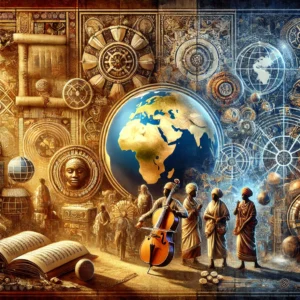Mbaññe: A Deep Dive into Cultural Significance, Modern Relevance, and Global Influence
Introduction to Mbaññe
The concept of mbaññe holds deep cultural significance and reflects the social values, etiquette, and norms that shape interactions within specific communities. This idea isn’t just a set of rules—it’s a way of living that impacts how individuals interact with one another and their environment. Mbaññe promotes harmony and respect, making it a critical element in the social fabric of cultures that practice it.
As we explore mbaññe, we’ll uncover its origins, its role in modern society, and how it continues to influence interactions on a global scale. Understanding mbaññe helps create a bridge between traditional values and contemporary lifestyles, giving it continued relevance today.
Origins and Etymology of Mbaññe

The term mbaññe has rich historical roots, with its origins deeply embedded in the traditions of communities where respect, harmony, and mutual understanding are prioritized. Linguistically, mbaññe evolved to encompass a range of social behaviors that were once unique to smaller, tight-knit groups. Over time, the concept broadened to apply to all aspects of daily life, ensuring that every interaction was conducted with care and respect.
In many cultures, the practice of mbaññe can be traced back to ancient times when communal well-being was paramount. Social rituals and customs were developed to maintain peace within the community, and mbaññe became a term that described this code of conduct. This history helps us understand why mbaññe is still regarded with such importance today.
Cultural Significance of Mbaññe
Mbaññe represents more than just a code of conduct; it’s a way of life. The concept guides behaviors in different aspects of daily living, from how people greet one another to how they interact in public spaces. It governs respect for elders, the value of helping others, and the importance of showing politeness in every situation.
What makes mbaññe particularly unique is how it’s passed down through generations. In many communities, it is not formally taught but rather absorbed through storytelling, family gatherings, and observing everyday actions. Parents and elders model mbaññe in their daily lives, ensuring that young people understand and practice it naturally. The result is a society that functions on mutual respect, shared values, and harmony.
Mbaññe in Daily Life
In practice, mbaññe shapes numerous everyday interactions. It guides simple behaviors like offering a greeting, showing politeness, or offering help to someone in need. Mbaññe also dictates how one should conduct themselves in the presence of elders or authority figures, emphasizing respect and deference.
The idea of mbaññe manifests from early childhood, when children are taught to be considerate and respectful of others. By the time they reach adulthood, these values have become ingrained in how they live. Whether it’s how they treat strangers or how they interact with family, mbaññe ensures that social harmony is preserved in all interactions.
Mbaññe and Communication
Mbaññe plays a vital role in communication, both verbal and non-verbal. It’s not only about what people say but also how they say it. Tone, body language, and context matter greatly in mbaññe-based interactions. Politeness, humility, and attentiveness are expected, ensuring that the communication fosters mutual respect.
Non-verbal cues are just as important as words. Gestures, facial expressions, and even silence can communicate respect or understanding. Misunderstanding these cues can lead to offense, which is why practicing mbaññe requires a deep understanding of cultural nuances. This attention to detail ensures smoother interactions, even in tense or complicated situations.
Mbaññe in Modern Society
As societies have evolved, so too has the practice of mbaññe. While modernization and urbanization have changed the way people live and interact, the core values of mbaññe—respect, harmony, and mutual understanding—remain relevant. In fact, these values may be even more important today, given the increasing diversity and complexity of social interactions.
In urban settings, where people from different backgrounds mix, mbaññe acts as a universal guide to respectful interaction. Modern mbaññe may not always adhere strictly to traditional customs, but it still requires individuals to act with consideration for others. In this way, mbaññe has adapted to modern life while maintaining its foundational principles.
Global Comparisons to Mbaññe
When we compare mbaññe to similar concepts in other cultures, we find common themes of respect, social harmony, and community values. For instance, the Japanese concept of wa emphasizes harmony within the community, much like mbaññe. In many African cultures, the idea of ubuntu, or humanity toward others, mirrors the communal respect that defines mbaññe.
Despite these similarities, each culture’s interpretation of respect and harmony varies. For example, the emphasis on hierarchy in some Asian cultures may differ from the more egalitarian approach found in mbaññe. By exploring these global comparisons, we can better appreciate the uniqueness of mbaññe while recognizing the universal importance of respectful social interaction.
Mbaññe in the Digital Age
In the age of technology and social media, mbaññe has adapted to new forms of communication. Digital platforms like social media allow people to interact across vast distances, but the subtleties of mbaññe can sometimes be lost in text-based communication. For instance, online, it’s harder to read someone’s tone or interpret non-verbal cues, making it easier for misunderstandings to occur.
However, technology also offers new ways to practice mbaññe. Online communities can create their own norms and expectations for respectful interaction, guided by the principles of mbaññe. While the format may differ, the underlying goal of promoting harmony and understanding remains unchanged.
Challenges in Preserving Mbaññe in a Globalized World
Globalization has brought new challenges to preserving cultural traditions, including mbaññe. As communities become more interconnected, traditional practices sometimes become diluted or replaced by more globalized behaviors. This has led to concerns about how younger generations will continue to practice mbaññe in a world where cultural norms are constantly shifting.
However, there is also hope that mbaññe can evolve alongside globalization. By integrating modern technology and global perspectives, mbaññe can still be relevant and practiced in ways that suit today’s world. The challenge is finding the balance between staying true to cultural roots while adapting to contemporary life.
Modern Global Influence of Mbaññe
Mbaññe is not confined to the cultures in which it originated. As people migrate and cultures intermingle, the principles of mbaññe have spread globally, influencing how individuals interact even in diverse settings. In multicultural societies, the values of mutual respect and harmony that mbaññe promotes are universally appreciated, making it a valuable concept for fostering global understanding.
In international diplomacy, business, and even everyday social media interactions, the ideals of mbaññe—respect for others, kindness, and consideration—are essential for building trust and cooperation across cultures. As more people become aware of these values, mbaññe has the potential to become a global concept.
The Future of Mbaññe
The future of mbaññe lies in its ability to adapt and remain relevant in an ever-changing world. Cultural preservation efforts, educational programs, and a renewed focus on respect in the digital age are key to ensuring that mbaññe continues to thrive. By teaching future generations about the importance of mutual respect and harmony, we can ensure that mbaññe remains a core principle in both traditional and modern societies.
As mbaññe continues to influence social interactions, it has the potential to become even more widespread, promoting positive interactions on a global scale. The future is bright for mbaññe, as it continues to evolve while remaining rooted in the core values that have defined it for centuries.
Conclusion
Mbaññe is a powerful cultural concept that has shaped social interactions for generations. Its emphasis on respect, harmony, and mutual understanding remains as relevant today as it did in the past. As the world changes, mbaññe continues to evolve, offering valuable lessons on how to interact with others respectfully and harmoniously, both in traditional and modern contexts.
Whether through face-to-face interactions or online communication, practicing mbaññe helps build stronger, more respectful relationships. As globalization accelerates and cultural practices adapt, the core values of mbaññe—respect, kindness, and consideration—remain vital to fostering a more connected and harmonious world.
FAQs about Mbaññe
- What is mbaññe? Mbaññe is a cultural concept that promotes respect, harmony, and mutual understanding within a community.
- How is mbaññe practiced in daily life? It is practiced through respectful behaviors like greetings, politeness, and consideration for others in both private and public spaces.
- Is mbaññe still relevant in modern society? Yes, mbaññe continues to be a guiding principle for behavior, helping navigate modern social interactions while preserving traditional values.
- How does mbaññe compare to similar concepts globally? Mbaññe shares common themes with concepts like wa (Japan) and ubuntu (Africa), though each culture has its unique interpretation of respect and harmony.
- What challenges does mbaññe face in a globalized world? Globalization can dilute traditional practices, but mbaññe has the potential to adapt and remain relevant in today’s interconnected world.
